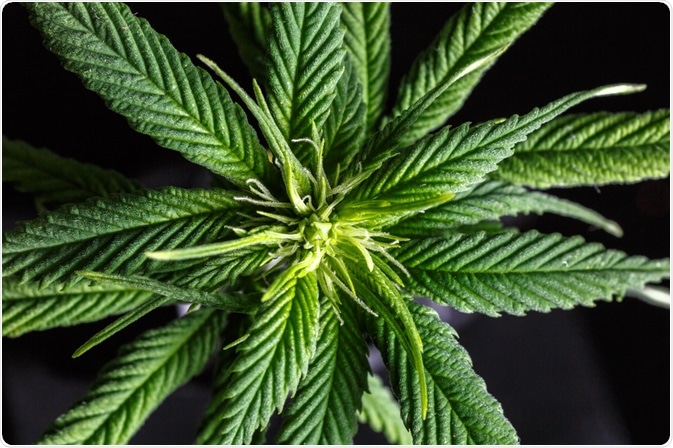Cannabis is a plant that contains tetrahydrocannabinol (THC), which is the main cannabinoid responsible for the psychoactive effect felt when ingesting or smoking the plant. A common mistake people make is that hemp and marijuana are different species of plants. In fact, they both are cannabis, which is a flowering plant from the family Cannabaceae.

Image Credit: Bukhta Yurii/Shutterstock.com
The main difference is in the legal classification of the term. By law, the legal classification of hemp is cannabis that contains 0.3 % or less tetrahydrocannabinol (THC). Hemp is an extremely versatile plant and has many uses. It is used for producing textiles, biofuels, foods, oil, and has many applications in skincare.
What is cannabis?
Cannabis is a genus of flowering plants in the family Cannabaceae. The genus is divided into three species, which include cannabis sativa, cannabis indica, and cannabis ruderalis. Cannabis is a fairly broad classification term that includes both hemp and marijuana plants.
What is hemp?
Hemp is a variety of the genus cannabis sativa plant species that is grown for industrial use. As mentioned previously, hemp has many uses and has lower concentrations of THC. Hemp is an extremely fast-growing plant similar to bamboo and was one of the first plants spun into fiber. Furthermore, there are several commercial uses for hemp that include paper, rope, textiles, clothing, biofuel, biodegradable plastics, and food.
Hemp fibers can be used to make textiles that are blended with other fibers, such as flax, cotton, silk, or polyester to make woven fabrics. The inner fibers of the plant tend to be woodier and are typically suited for industrial applications. It has high strength and durability and is often used to reinforce structures with applications for producing construction materials in the building industry. Hemp oil from the seeds can be used in the manufacture of oil-based paints and skincare products.
Furthermore, hemp seeds are commonly used for nutritional value in food as it is low in saturated fats and contain no trans fats. It is well known that polyunsaturated fats are healthy for the body, in particular omega-3 fatty acids. Hemp seeds are a great source of essential fatty acids, especially omega-3 fatty acids.
The body must get its source of essential fatty acids from the diet because it cannot produce its own. This is essential for overall health as is the ratio of omega-3 to omega-6 fatty acids in the body. It is quite common for there to be a much higher level of omega-6 in the body due to a poor diet. However, adding hemp seeds to the diet may help to balance the ratio.
What is marijuana?
Marijuana is comprised largely of cannabis sativa plants as well. However, although marijuana and hemp share a species, they are quite different. Marijuana has much higher levels of THC in the plant and causes intoxication when consumed. Typically, marijuana contains about 5 – 20% THC content in the plant. In most cities and countries, marijuana is illegal to grow and use.
However, more countries are relaxing the rules around legalization, especially for medicinal and recreational use. The most common form that marijuana is sold in is the dried flower or plant. But, it can also be subjected to extraction methods to be used in food.
The difference between hemp and marijuana
Cannabis and marijuana are often interchangeable terms, especially in industry. The term cannabis technically refers to the whole genus of plants that include hemp and marijuana. However, the difference lies in the THC content when distinguishing between the two, which has become the standard measure for classifying the species as hemp or marijuana.
In fact, this standard measure of distinction for using THC thresholds is considered when producing new varieties of cannabis plants. Hence, cannabis plants containing many cannabinoids and other chemicals are divided by THC content for the legal classification of hemp and marijuana.
Sources:
- Tourangeau, Wesley (2015), "Re-defining Environmental Harms: Green Criminology and the State of Canada's Hemp Industry", Canadian Journal of Criminology & Criminal Justice, 57 (4): 528–554
- Keller, NM (2013), "The Legalization of Industrial Hemp and What it Could Mean for Indiana's Biofuel Industry" (PDF), Indiana International & Comparative Law Review, 23 (3): 555
- Sawler, J; Stout, J. M; Gardner, K. M; Hudson, D; Vidmar, J; Butler, L; Page, J. E; Myles, S (2015). "The Genetic Structure of Marijuana and Hemp". PLOS ONE. 10 (8): e0133292.
Further Reading